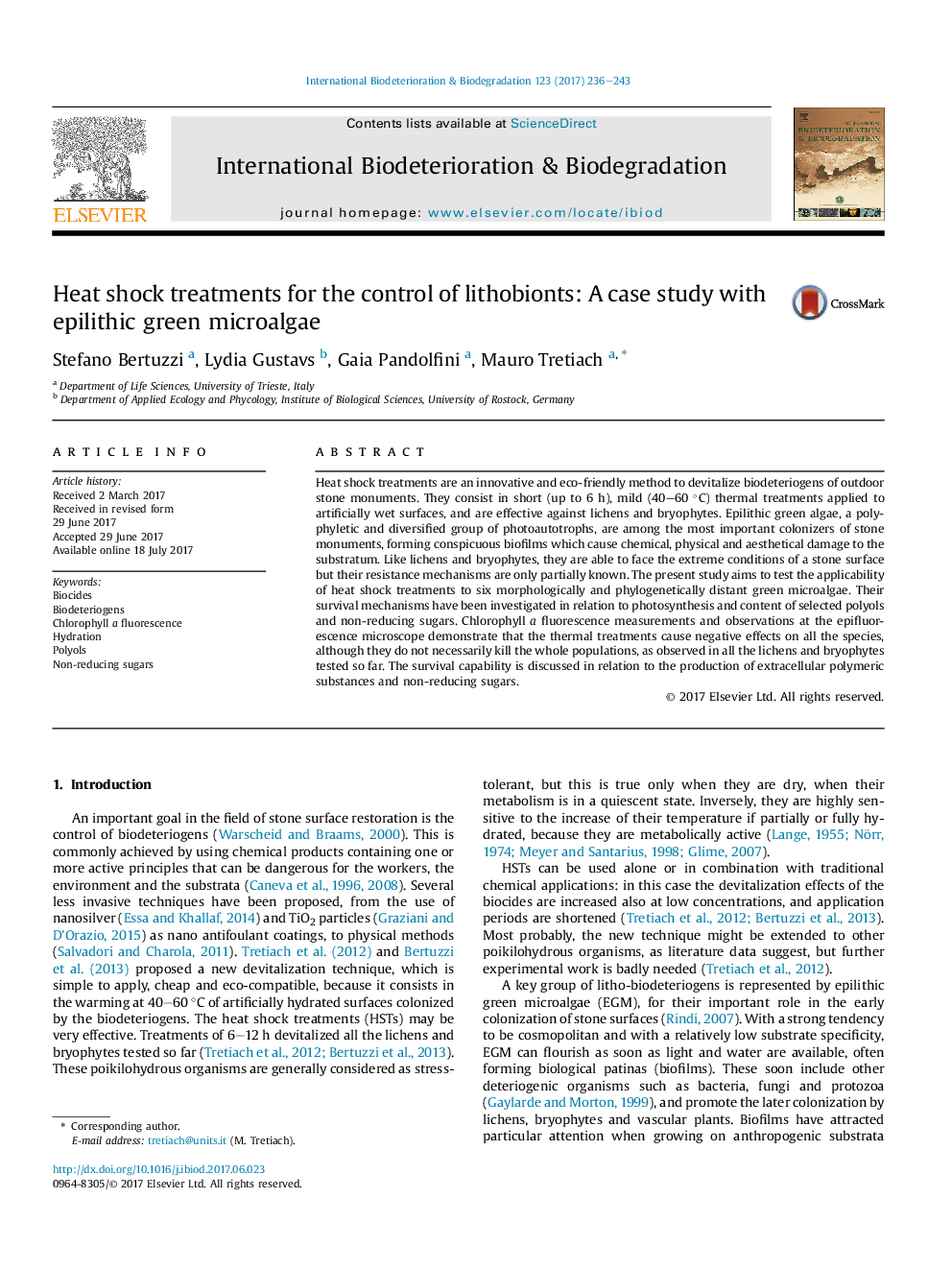| کد مقاله | کد نشریه | سال انتشار | مقاله انگلیسی | نسخه تمام متن |
|---|---|---|---|---|
| 5740272 | 1616294 | 2017 | 8 صفحه PDF | دانلود رایگان |
- Heat Shock Treatments (HSTs) are effective against outdoor biodeteriogens.
- HSTs must be applied to wet colonized surfaces.
- Efficient against lichens and bryophytes, HSTs were tested against six algae.
- All algae were affected by HSTs, but some cells could sporadically survive.
- To be effective against algae, HSTs should be supplemented by diluted biocides.
Heat shock treatments are an innovative and eco-friendly method to devitalize biodeteriogens of outdoor stone monuments. They consist in short (up to 6 h), mild (40-60 °C) thermal treatments applied to artificially wet surfaces, and are effective against lichens and bryophytes. Epilithic green algae, a polyphyletic and diversified group of photoautotrophs, are among the most important colonizers of stone monuments, forming conspicuous biofilms which cause chemical, physical and aesthetical damage to the substratum. Like lichens and bryophytes, they are able to face the extreme conditions of a stone surface but their resistance mechanisms are only partially known. The present study aims to test the applicability of heat shock treatments to six morphologically and phylogenetically distant green microalgae. Their survival mechanisms have been investigated in relation to photosynthesis and content of selected polyols and non-reducing sugars. Chlorophyll a fluorescence measurements and observations at the epifluorescence microscope demonstrate that the thermal treatments cause negative effects on all the species, although they do not necessarily kill the whole populations, as observed in all the lichens and bryophytes tested so far. The survival capability is discussed in relation to the production of extracellular polymeric substances and non-reducing sugars.
Journal: International Biodeterioration & Biodegradation - Volume 123, September 2017, Pages 236-243
